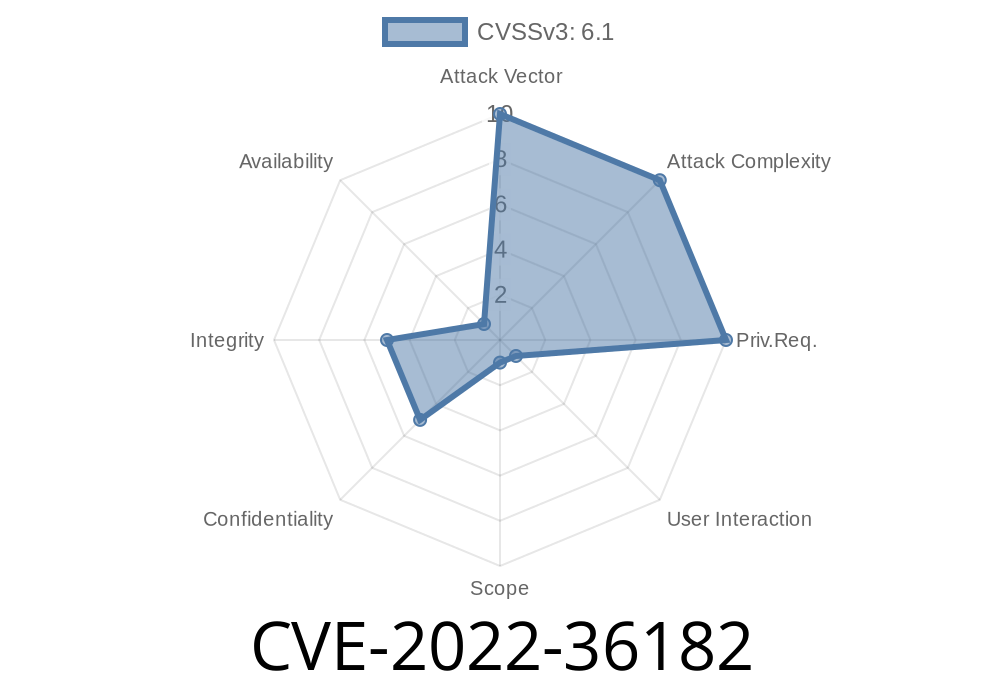The open-source identity-based access management solution, Hashicorp Boundary v.8., has been deemed vulnerable to a clickjacking attack through CVE-2022-36182. In this long read post, we will be examining the details of this vulnerability, including code snippets and links to original references. By exploiting this vulnerability, attackers may intercept login credentials, redirect users to malicious websites, or cause users to unknowingly perform harmful actions on the site.
Vulnerability Details
Clickjacking, also known as a user interface redress attack, is a popular technique employed by hackers to deceive users into clicking on hidden elements in their browser. Typically, a malicious site would place an invisible layer over the legitimate website using an iframe, thus tricking the user into interacting with the malicious site.
Hashicorp Boundary v.8. is susceptible to such clickjacking attacks due to its inadequate protection against iframe embedding. Specifically, the application lacks certain security headers that can prevent unauthorized framing of its content.
Exploit Details
In order to execute clickjacking on the vulnerable Hashicorp Boundary v.8., an attacker would create a malicious website that employs an iframe to overlay the targeted application. The attacker would then lure users to visit the malicious site, where their interactions with the seemingly legitimate page would actually be redirected to the attacker's site.
Here's a simple example of a malicious HTML file that exploits this vulnerability
<!DOCTYPE html>
<html>
<head>
<title>Malicious Site</title>
<style>
iframe {
position: absolute;
opacity: .01;
width: 100%;
height: 100%;
}
</style>
</head>
<body>
<h1>Seemingly Legitimate Content</h1>
<iframe src="https://targeted_boundary_application.example.com"></iframe>;
</body>
</html>
In this case, the malicious page contains an iframe with an extremely low opacity, effectively making it invisible. As users interact with the "Seemingly Legitimate Content," their actions are unknowingly performed within the stealthily embedded iframe, effectively hijacking their inputs and potentially capturing sensitive information.
Mitigation
To protect Hashicorp Boundary v.8. from clickjacking attacks, web administrators should implement security headers that can restrict unauthorized framing of the application.
One recommended approach is to add the X-Content-Type-Options, X-Frame-Options, or the Content-Security-Policy header. These can be set within the server configuration file or via backend proxy settings. For example, in an Nginx server configuration, the following lines would be added:
add_header X-Content-Type-Options nosniff;
add_header X-Frame-Options DENY;
add_header Content-Security-Policy "frame-ancestors 'none'";
These headers will ensure that the Hashicorp Boundary application is not embedded within any other websites, effectively safeguarding it against clickjacking attacks.
Original References
1. Hashicorp Boundary GitHub repository: https://github.com/hashicorp/boundary
2. Clickjacking explanation by OWASP: https://www.owasp.org/index.php/Clickjacking
3. CVE-2022-36182 details on the NIST National Vulnerability Database: https://nvd.nist.gov/vuln/detail/CVE-2022-36182
4. Hashicorp Boundary official website: https://www.boundaryproject.io/
Conclusion
In this post, we have explored the clickjacking vulnerability CVE-2022-36182 found within Hashicorp Boundary v.8.. By understanding the mechanics behind clickjacking attacks, web administrators can better protect their applications from potential harm. To secure the vulnerable Hashicorp Boundary v.8. and applications alike, the implementation of specific security headers is vital. As newer versions of the application are released, users should update promptly to fortify their systems against emerging threats.
Timeline
Published on: 10/27/2022 13:15:00 UTC
Last modified on: 10/31/2022 12:38:00 UTC
